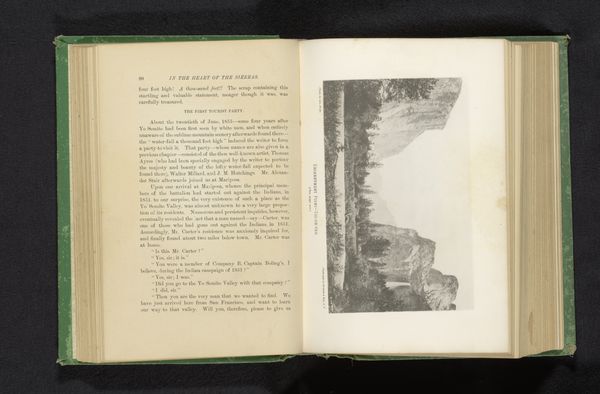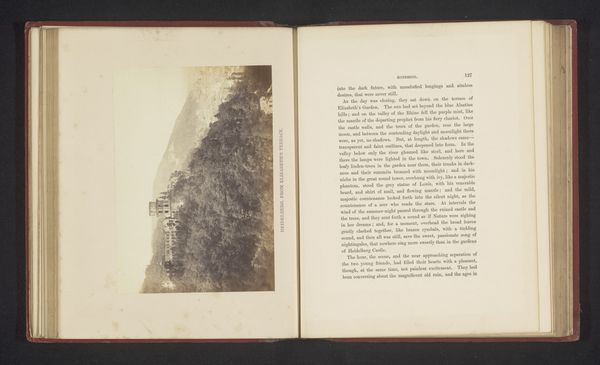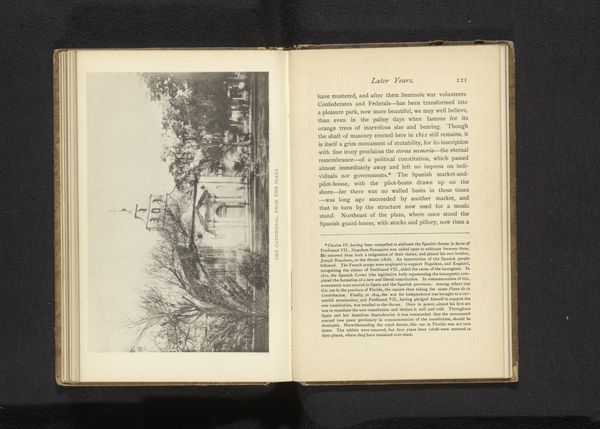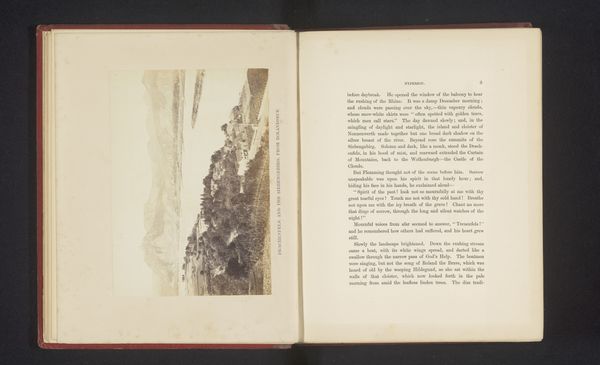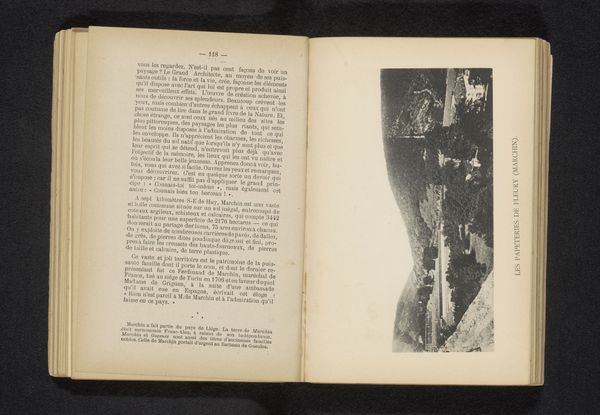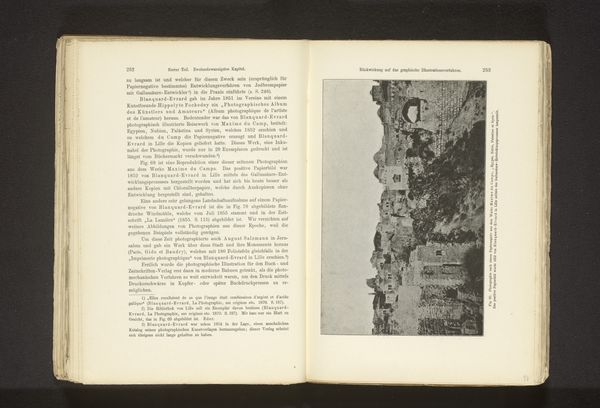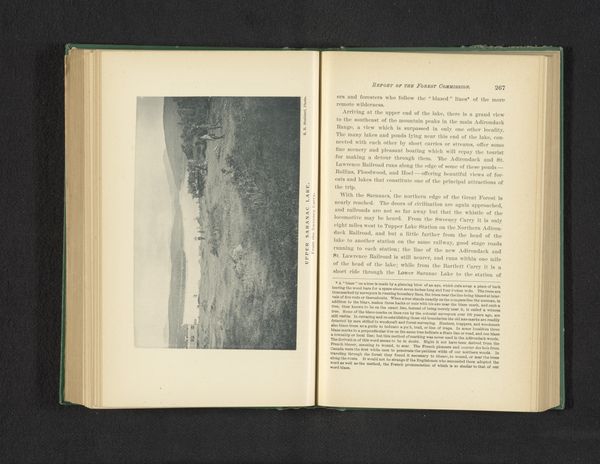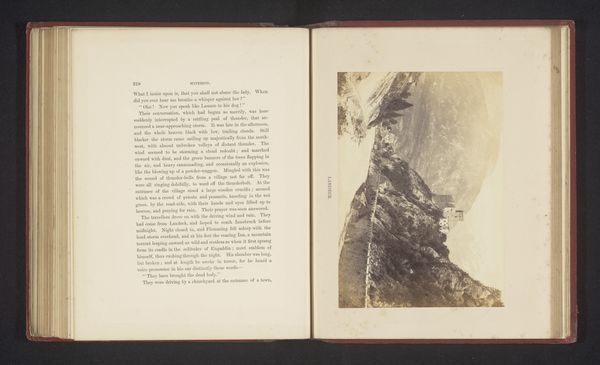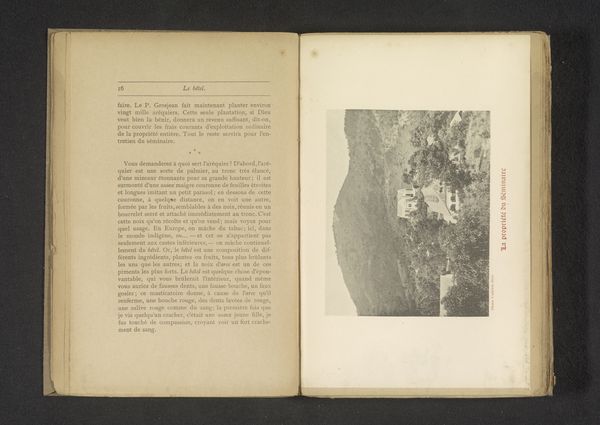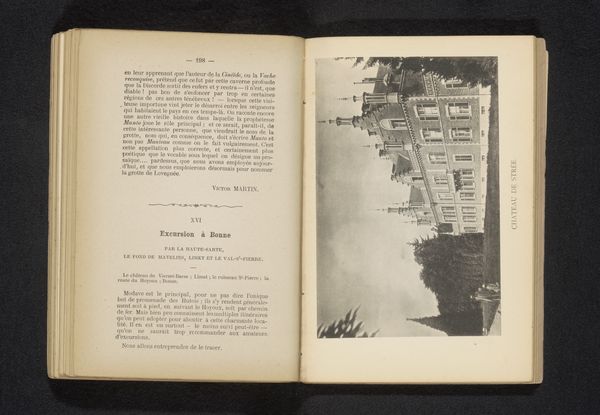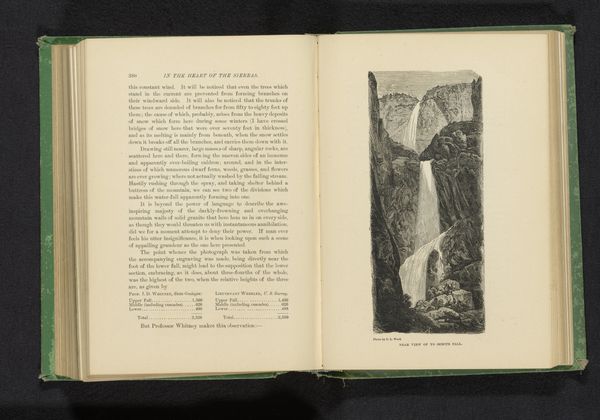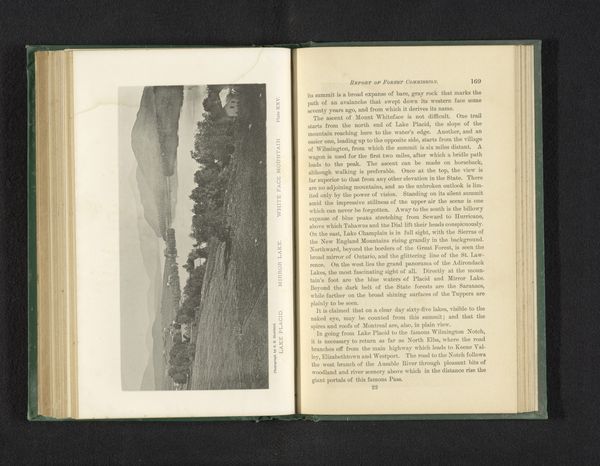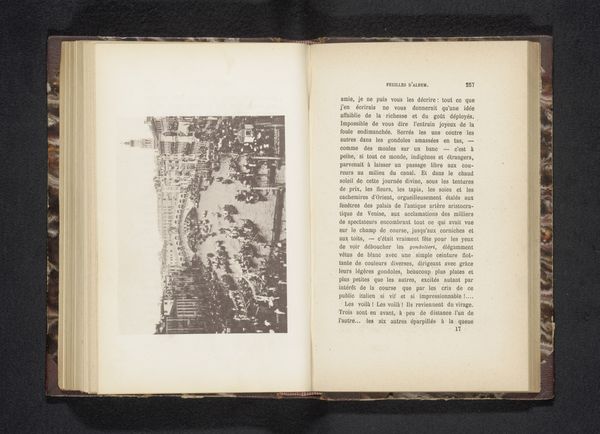
print, photography
# print
#
landscape
#
photography
#
historical font
#
building
Dimensions: height 105 mm, width 157 mm
Copyright: Rijks Museum: Open Domain
Curator: Here we have "Gezicht op een kerk te Hoei," or "View of a church in Hoei," an interesting printed work by Victor Gaillard from before 1890. The presentation of this image—on the open page of a bound volume—makes it feel as though we are encountering it within an old book. What's your immediate take? Editor: It's stark. Starkly black and white, starkly vertical. It gives a sensation of climbing, looking up and struggling against a very steep slope. Also, that open book format puts me right in the bindery… it feels immediate in its physical production, you know? Curator: The image does emphasize a strong verticality. That visual path draws the eye upwards towards what is probably the church tower. As for the placement within the book itself, does that say anything to you about its context? Editor: It suggests mass production, obviously—these photographs reproduced for a wider audience, bound and sold. Also, given the state of preservation and the historical font on the opposing page, it speaks to the value placed on craftsmanship. Curator: It's certainly a window into a specific period of appreciation for architectural documentation. The book itself becomes a vehicle for cultural memory, preserving a view that perhaps has since changed. Editor: Absolutely. Think about the materiality of that book: paper pulp, ink… a huge amount of processing and physical work. It’s a stark contrast to the serene permanence that the photograph tries to depict of the church. Curator: That interplay is so crucial here—this contrast between fleeting capture and enduring subject, captured and reproduced and circulated. This photographic technology made buildings like the church symbols and accessible to a larger world. Editor: Exactly. Symbols born from labor. How much were the workers who assembled this book paid? Were they able to admire the artistic vision they helped disseminate, or were they just cogs in the production? Curator: I suppose, in closing, the work invites us to consider both the sacred space depicted and the often-overlooked means through which it reaches us. Editor: Precisely. To acknowledge the object and the subject. The visible and the invisible hands in history.
Comments
No comments
Be the first to comment and join the conversation on the ultimate creative platform.
